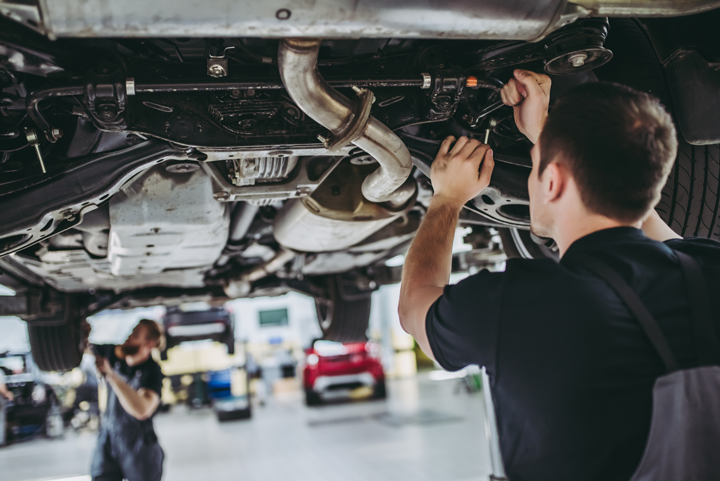Is It Dangerous to Drive With Low Tire Pressure?
When that orange low tire pressure light flashes on your dashboard, this is the first question that may pop into your head: Is it dangerous to drive with low tire pressure? And that’s definitely a good question to ask, because the short answer to this question is yes.
There are several reasons as to why it’s dangerous to drive with low tire pressure (all of which we will cover in this article). The most common problem is that many people don’t realize when they are driving with low tire pressure. For this reason, Flagstaff Collision Center will provide you with plenty of information to help you better understand how to check your tire pressure, causes of low tire pressure, and the dangers of driving with low tire pressure.
Have you been in an accident due to low tire pressure?
Contact Flagstaff Collision Center today for collision repair services.
Routinely Check Your Tire Pressure
Tire pressure is the inflation pressure of the tire. You can find the recommended inflation pressure for your vehicle in the owner’s manual or on the placard that is secured to the edge of your vehicle’s door. Tire gauges are simple (and very cheap) tools that you can use to check your tires routinely. Simply hook the tire gauge up to the valve stem and push in slightly to get your tire psi (pounds per square inch) reading.
Even though your vehicle may have a system that monitors tire pressure, it’s important to manually check your tire pressure every so often. If your vehicle’s tire pressure system malfunctions, you could be left in a bad position with unsafe tires.
Causes of Low Tire Pressure
First and foremost, tire damage (such as hitting a nail) is one of the most obvious causes. However, tires will naturally lose pressure over time. You may also notice low tire pressure during times of colder temperature. A drop in temperature causes the air to become dense, which in turn causes the tire pressure to decrease.
On average, it is said that tires lose approximately one pound of pressure for every 10-degree drop in temperature. With this in mind, keep an extra close eye on your tire pressure as you head into the colder seasons, such as fall and winter.
Is It Dangerous to Drive With Low Tire Pressure?
As we mentioned earlier, the answer is yes, it absolutely is dangerous to drive with low tire pressure. Take a look at what can happen if you drive with low tire pressure:
- Tire wear happens much quicker. This can lead to a flat tire or even a blowout.
- In reference to the above-mentioned point, you are more likely to have a tire blowout. In many cases of low tire pressure, your tires become distorted due to damage of the inside wall. This very often leads to dangerous blowouts.
- The handling of your vehicle will be negatively affected. This lessens your ability to quickly avoid emergency situations.
- It can lower your gas mileage. Less traction means your vehicle has to use more gas than it should. Even though this may not be a dangerous affiliation to low tire pressure, it is one that affects you financially.
As you can see from the list above, most of these issues are related to safety. It’s easy to see why it can be so dangerous to drive with low tire pressure. If you do not have access to an air pump that you can use to inflate your tires to the proper psi amount, locate an auto body repair service to further assist you.
What is Dangerously Low Tire Pressure?
It’s safe to say that any tire that reads under 20 psi is considered to be a flat tire. It’s always best to keep your psi as close to your vehicle’s recommended number. Most tire pressure systems will warn you once the psi is 25% lower than the recommended number.
If you are hovering close to 20 psi, you are getting very close to a dangerously low tire pressure that can easily lead to a blowout. When your tire is this low, it’s usually best to bring your vehicle to an auto body repair service, as you may have something seriously wrong with the tire that could require a complete replacement.
Does Your Vehicle Have Low Tire Pressure?
There’s no question that driving with low tire pressure comes with a variety of risks. Many of these risks are safety-related issues that should not be overlooked. If you find yourself constantly running into low tire pressure issues with your vehicle, it would certainly be beneficial to bring your vehicle to our collision repair shop in Flagstaff for further evaluation. Contact us today and one of our team members will gladly assist you.




